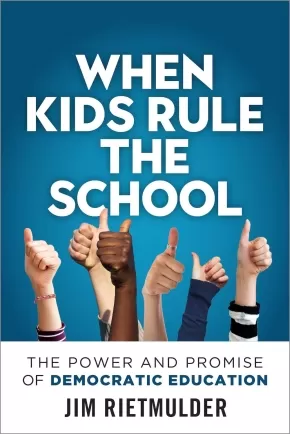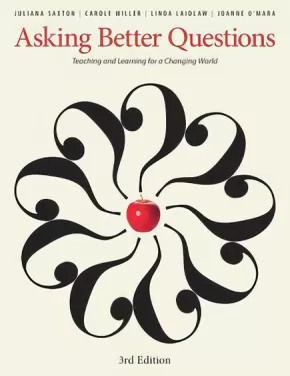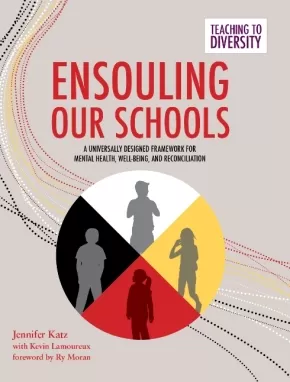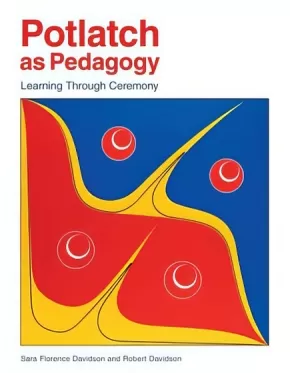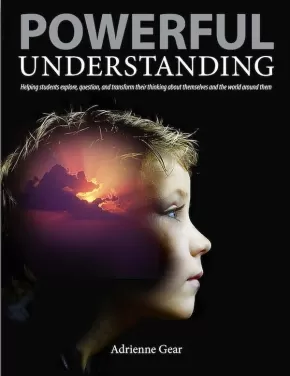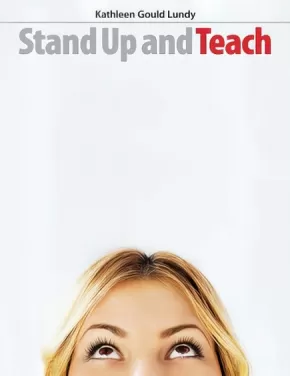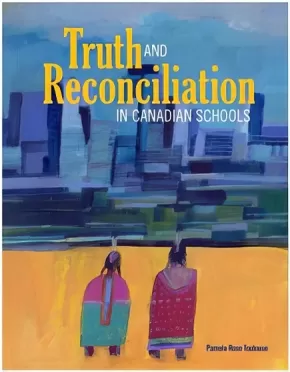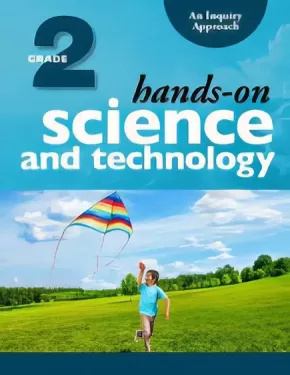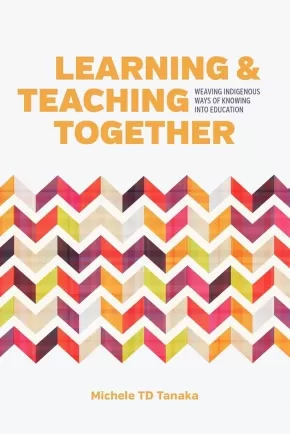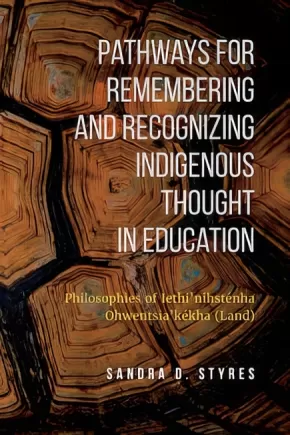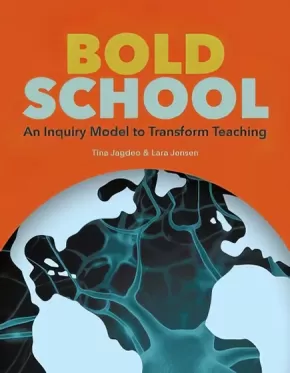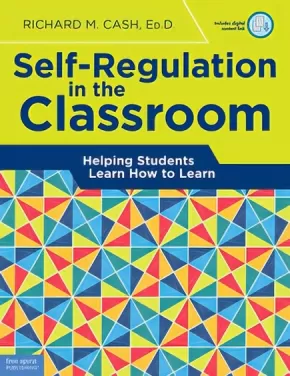Building Strong Learning
Synopsis:
How self-directed democratic schooling builds fulfilling lives and can lead the way back to a civilized society.
Education is ripe for democratic disruption. Students in most schools are denied fundamental social ideals such as personal freedom, public government, rule of law, and free enterprise. In our increasingly authoritarian post-truth world, self-directed democratic schooling offers a timely alternative: educating children in civilized society and showing that self-motivation outperforms coercion in its power to educate and fulfill.
When Kids Rule the School is the first comprehensive guide to democratic schooling, where kids practice life in a self-governed society—empowered as voters, bound by laws, challenged by choice, supported by community, and driven by nature. Through heartwarming stories and hard-headed details, this book covers:
- Democratic schooling philosophy, theory, and practice
- School governance by students and staff together
- Student self-direction and day-to-day life
- Deep play, cognitive development, and critical thinking
- Why democratic schooling is morally right and effective
- Model bylaws and guidance for starting a democratic school.
Created for educators, parents, and scholars, When Kids Rule the School will immerse you, heart and mind, in a promising new approach to education, and stretch your thinking about what school can be.
Educator Information
When Kids Rule the School lays out the theory and practice of self-directed democratic schooling.
Written by the co-founder of The Circle School, open since 1984.
Self-directed democratic schooling results in higher rates of college attendance, more undergraduate and graduate degrees, healthy relationships with authority, and unflinching self-responsibility.
Intended for educators, parents (especially homeschoolers and unschoolers), and scholars of education.
Additional Information
288 pages | 6.00" x 9.00" | 10 illustrations
Synopsis:
Teaching and learning for a changing world
How do we help students makes sense of our increasingly complex digital world? This third edition of this classic text shows teachers how to empower students with the skills they need to ask critical and reflective questions about the overwhelming amount of information around them.
Asking Better Questions offers comprehensive tools and strategies to promote critical thinking and discussion in the classroom and encourage engaged and empathetic listening. Stimulating activities throughout the book promote lifelong inquiry skills that will help teachers and students grow in the classroom and explore broader issues in the community beyond. Challenge your students to assume a deeper ownership of their learning, ask questions that are important to them, and care about the answers.
On Twitter: #ABQ3
Educator Information
For students 5 - 14.
Additional Information
160 Pages
Synopsis:
In an educational milieu in which standards and accountability hold sway, schools can become places of stress, marginalization, and isolation instead of learning communities that nurture a sense of meaning and purpose. In Ensouling Our Schools, author Jennifer Katz weaves together methods of creating schools that engender mental, spiritual, and emotional health while developing intellectual thought and critical analysis.
Kevin Lamoureux contributes his expertise regarding Indigenous approaches to mental and spiritual health that benefit all students and address the TRC Calls to Action.
Grade: For all teachers
Reviews
Additional Information
200 pages | 8.00" x 10.50"
by Jennifer Katz | with Kevin Lamoureux | foreword by Ry Moran
Synopsis:
Inspired by Haida ceremonial practice, father and daughter present a model for learning that is holistic, relational, practical, and continuous.
In 1884, the Canadian government enacted a ban on the potlatch, the foundational ceremony of the Haida people. The tradition, which determined social structure, transmitted cultural knowledge, and redistributed wealth, was seen as a cultural impediment to the government’s aim of assimilation.
The tradition did not die, however; the knowledge of the ceremony was kept alive by the Elders through other events until the ban was lifted. In 1969, a potlatch was held. The occasion: the raising of a totem pole carved by Robert Davidson, the first the community had seen in close to 80 years. From then on, the community publicly reclaimed, from the Elders who remained to share it, the knowledge that has almost been lost.
Sara Florence Davidson, Robert’s daughter, would become an educator. Over the course of her own education, she came to see how the traditions of the Haida practiced by her father—holistic, built on relationships, practical, and continuous—could be integrated into contemporary educational practices. From this realization came the roots for this book.
Reviews
"Potlatch as Pedagogy is wonderfully wise, hopeful, heartful, eloquent, and loving! Every teacher candidate and teacher needs to read this book. The authors expertly evoke the history and culture of the Haida as they call forth the sadness as well as the hope and joy of generations of people who were misunderstood and mistreated. In this time of Truth and Reconciliation, we all need to attend to this book." —Dr. Carl Leggo, Professor, Department of Language and Literacy Education, University of British Columbia
Educator Information
For all teachers.
Recommended in the Canadian Indigenous Books for Schools 2019-2020 resource list as a Teacher Resource for grades 10 to 12 with reference to Social Studies.
Additional Information
200 pages | 7.00" x 9.00"
Synopsis:
Helping students explore, question, and transform their thinking about themselves and the world around them.
In these challenging times, teaching children to think critically and reflectively AND be compassionate, responsible and caring citizens at the same time is a tall order. Powerful Understanding explores effective ways to build social-emotional skills and help students make connections, question what they read, and reflect on their learning as they develop into stronger readers and learners. Strategic and critical thinking strategies revolve around core anchor books that help integrate thinking into everything you teach—from social responsibility, to immigration, to life cycles. This highly readable book includes a wealth of classroom examples and extensive hands-on activities designed to help students to think more deeply, learn more widely, and develop a more powerful understanding of what it means to be a responsible and compassionate person.
Educator Information
Grade Range: K-8
Table of Contents
Preface
Introduction
Chapter 1: The Components of Powerful Understanding
Chapter 2: Lessons on Understanding Self
Chapter 3: Lessons on Understanding Others
Chapter 4: Lessons on Understanding the World
Final Thoughts
Acknowledgments
Professional Resources
Index
Additional Information
160 pages | 8.30" x 10.80"
Synopsis:
What do you need for a well-run classroom full of engaged students? Kathy Lundy takes you step-by-step through the nitty-gritty details of creating a classroom that works for you and your students. This honest look at the complexity of teaching introduces you to strategies that work and classroom management tips that make a difference. From building a safe and inclusive classroom, to teaching with imagination and innovation, to engaging with your mentors, Stand Up & Teach will help you become the teacher you want to be.
Educator Information
Targeting youth ages 5-17.
Additional Information
128 pages | 8.30" x 10.80"
Synopsis:
In this book, author Pamela Toulouse provides current information, personal insights, authentic resources, interactive strategies and lesson plans that support Indigenous and non-Indigenous learners in the classroom. This book is for all teachers that are looking for ways to respectfully infuse residential school history, treaty education, Indigenous contributions, First Nation/Métis/Inuit perspectives and sacred circle teachings into their subjects and courses. The author presents a culturally relevant and holistic approach that facilitates relationship building and promotes ways to engage in reconciliation activities.
Additional Information
147 pages | 8.00" x 10.50"
Synopsis:
Hands-On Science and Technology: An Inquiry Approach is filled with a year’s worth of classroom-tested activity-based lesson plans. The grade 2 book is divided into four units based on the current Ontario curriculum for science and technology:
- Growth and Changes in Animals
- Movement
- Properties of Liquids and Solids
- Air and Water in the Environment
This new edition includes many familiar great features for both teachers and students: curriculum correlation charts; background information on the science and technology topics; complete, easy-to-follow lesson plans; reproducible student materials; materials lists; and hands-on, student-centred activities.
Useful new features include:
- the components of an inquiry-based scientific and technological approach
- Indigenous knowledge and perspective embedded in lesson plans
- a four-part instructional process—activate, action, consolidate and debrief, and enhance
- an emphasis on technology, sustainability, and differentiated instruction
- a fully developed assessment plan that includes opportunities for assessment for, as, and of learning
- a focus on real-life technological problem solving
- learning centres that focus on multiple intelligences and universal design for learning (UDL)
- land-based learning activities
- a bank of science-related images
Educator& Series Information
This book is from the Hands-On Science: An Inquiry Approach (for Ontario) series.
Recommended for grade 2.
Includes some Indigenous content/perspectives from Indigenous Consultant Kevin Reed.
Additional Information
|
Synopsis:
Across Canada, teachers unfamiliar with Aboriginal approaches to learning are seeking ways to respectfully weave Aboriginal content into their lessons. This book introduces an indigenist approach to education. It recounts how pre-service teachers immersed in a cross-cultural course in British Columbia began to practise Indigenous ways of knowing. Working alongside Indigenous wisdom keepers, they transformed earth fibres into a mural and, in the process, their own ideas about learning and teaching. By revealing how they worked to integrate Indigenous ways of knowing into their practice, this book opens a path for teachers to nurture indigenist cross-cultural understanding in their classrooms.
Reviews
"Teachers in British Columbia and throughout Canada who struggle with how to enact curriculum changes that incorporate Indigenous knowledge, history, and identity will find this book illuminating … in spite of the seemingly overwhelming challenges in making a space for Indigenous thought and experience, it can and must be done. The transformation has been happening and is continuing." — Michael Marker, BC Studies, no. 196, Winter 2017/18
"… Indigenous educators and allies will find this text inspirational, hopeful, and useful." — Alma M. O. Trinidad, School of Social Work, Portland State University, Great Plains Research, April 2018
Additional Information
260 pages | 6.00" x 9.00"
Synopsis:
The second edition of Natural Curiosity supports a stronger basic awareness of Indigenous perspectives and their importance to environmental education. The driving motivation for a second edition was the burning need, in the wake of strong and unequivocal recommendations by the Truth and Reconciliation Commission, to situate Indigenous perspectives into the heart of Canadian educational settings and curricula, most notably in connection with environmental issues.
The Indigenous lens in this edition represents a cross-cultural encounter supporting what can become an ongoing dialogue and evolution of practice in environmental inquiry. Some important questions are raised that challenge us to think in very different ways about things as fundamental as the meaning of knowledge.
New in the Second Edition: Revision of the four branches of environmental inquiry (Lorraine Chiarotto), by Julie Comay; Indigenous lenses on each of the branches by Doug Anderson; 16 new educator stories.
Reviews
"Natural Curiosity 2nd Edition is an excellent resource for educators seeking to act as co-inquirers with their students and share the learning spirit while fostering relationship with our natural kin and relations. With a newly expanded lens on Indigenous perspectives and worldviews, this resource encourages teachers with philosophies, rationales, tools and activities to help them grow ecological and social justice citizens. A timely resource and highly recommended." -- Jean-Paul Restoule
"In Natural Curiosity 2nd Edition, Western ways of relating to nature intermingle with Indigenous ways. The book respects the integrity of both coexisting cultural perspectives. By understanding both, readers and their students will gain greater curiosity and deeper insights to make sense of the world around them or to solve problems." -Dr Glen S Aikenhead
Additional Information
284 pages | 8.40" x 10.90" | 2nd Edition
Synopsis:
Nature based classrooms are powerful programs that seamlessly merge early childhood and environmental education to develop a lifelong connection with the natural world. This book is for preschool and primary educators who are thinking about adding a nature component to their current program and for those who have started to take their students outside and are looking for more information to run a successful and safe outdoor program. This user-friendly book provides guidance on how to organize, manage and resource a nature early learning program.
Synopsis:
Indigenous scholars have been gathering, speaking, and writing about Indigenous knowledge for decades. These knowledges are grounded in ancient traditions and very old pedagogies that have been woven with the tangled strings and chipped beads of colonial relations.
Pathways for Remembering and Recognizing Indigenous Thought in Education is an exploration into some of the shared cross-cultural themes that inform and shape Indigenous thought and Indigenous educational philosophy. These philosophies generate tensions, challenges, and contradictions that can become very tangled and messy when considered within the context of current educational systems that reinforce colonial power relations. Sandra D. Styres shows how Indigenous thought can inform decolonizing approaches in education as well as the possibilities for truly transformative teaching practices. This book offers new pathways for remembering, conceptualizing and understanding these ancient knowledges and philosophies within a twenty-first century educational context.
Additional Information
248 pages | 6.00" x 9.00"
Synopsis:
In Achieving Indigenous Student Success, author Pamela Toulouse provides strategies, lessons, and hands-on activities that support both Indigenous and non-Indigenous learners in the secondary classroom. Read chapters on topics such as:
- Indigenous Pedagogy and Classrooms Considerations
- Indigenous Self-Esteem and Mental Health Activities
- Differentiated Instruction and Bloom's Taxonomy
- Attrition, Retention, Transition, and Graduation Continuum
- Indigenous Themes and Material Resources
- Culturally Appropriate Secondary Lesson Plans by Subject (including English, Math, Science, History, Geography, Health, Physical Education, Drama, Music, Visual Arts, Technological Studies, Business Studies, Indigenous Worldviews, Guidance and Career Studies, and Social Studies and the Humanities)
This book is for all teachers of grades 9–12 who are looking for ways to infuse Indigenous perspectives into their courses. Ideas include best practices for retention/transition/graduation planning, differentiated instruction, assessment, and equity instruction. Using appropriate themes for curricular connections, the author presents a culturally relevant and holistic approach that helps to build bridges between cultures and fosters self-esteem in all students.
Additional Information
| 184 pages | 8.00" x 10.50" |
Synopsis:
The move toward teaching through inquiry is evident in curriculum documents across the continent. In this book, you’ll find a clear approach for incorporating inquiry into your classroom.
Based on current research and solid classroom experience, authors Tina Jagdeo and Lara Jensen examine what inquiry is, then break it down into manageable steps that can be used with any K–12 age group. They explore and explain each step, providing real-life classroom examples.
The Bold School model
- provides a four-step inquiry process as a manageable way to deepen understanding and solve a problem or issue.
- focuses on the importance of critical, creative and compassionate thinking skills in today’s world.
- uses provocations to kickstart inquiry and encourage students to wonder.
- builds a toolkit of strategies for research.
- encourages divergent thinking to brainstorm ways students can make a difference in local and global contexts.
- explores a variety of ways to take action.
- shows administrators how to support teachers to teach through inquiry.
Additional Information
127 pages | 7.00" x 9.00"
Synopsis:
Grit. Determination. Mindset. Self-control.
All these terms are attributes of self-regulated learning, which is the ability to manage impulses, stay focused on tasks through completion, and develop a sense of autonomy in learning to achieve academic success.
In Self-Regulation in the Classroom, Richard M. Cash translates research and theory into easy-to-implement strategies and ideas you can use to help students—with special needs and without—become self-directed learners, including ways for them to:
- increase their engagement in learning
- boost their confidence
- avoid meaningless distraction
- develop effective study habits
- set and achieve goals
- use failure as a learning tool
- reflect and relax
A foundation for promoting positive behavior and executive function skills, this book can help you meet the needs of all your learners and help them reach their potential in the classroom and in the real world.
The teacher and student forms, charts, and lists in the book are downloadable for use in your classroom. Also available is a free study guide to be used in PLCs and book study groups.
“Rich in research and theory but practical enough for Monday morning classroom activities, this book is for anyone looking to increase student engagement and help students regulate their thinking and behavior.”—Nathan Warner, M.Ed., assistant principal
Additional Information
184 pages | 8.50" x 11.00"

